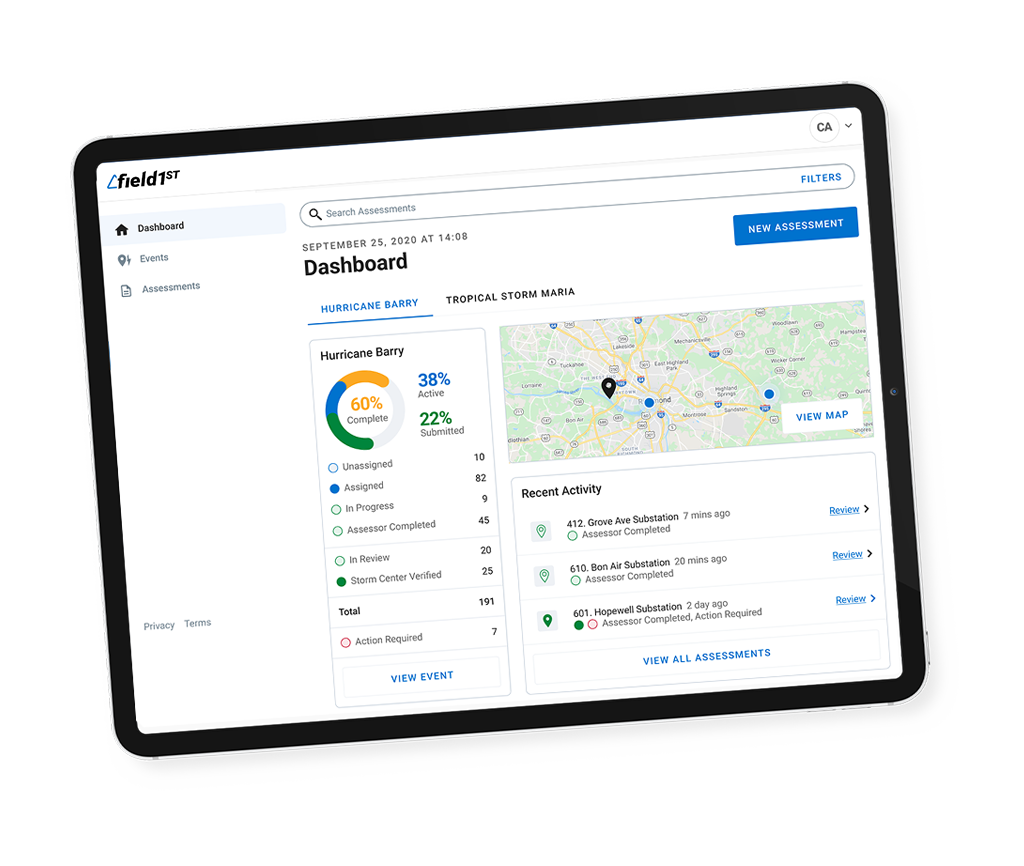Maintaining a safe work environment is crucial for any organization. To ensure the effectiveness of safety programs, it is important to measure and evaluate safety performance using key performance indicators (KPIs). Two types of KPIs commonly used in the field of safety are leading indicators and lagging indicators. In addition, near miss reporting plays a vital role in identifying potential hazards and preventing future incidents. In this comprehensive guide, we will delve into the significance of safety KPIs, explore the differences between leading and lagging indicators, and emphasize the importance of near miss reporting in promoting a safe work environment.
What are Safety KPIs?
Safety KPIs, or safety key performance indicators, are measurable values that provide insights into the effectiveness of safety programs and help organizations evaluate their safety performance. These indicators enable businesses to track safety-related goals and objectives, identify potential hazards, and implement corrective actions to prevent incidents. Safety KPIs are crucial for creating a culture of safety within an organization and promoting continuous improvement in workplace safety.
Leading Indicators: Proactive Measures for Safety
Leading indicators are proactive measures that focus on preventive actions and activities that are predictive of future safety performance. These indicators provide real-time information and enable organizations to take proactive steps to mitigate potential risks and prevent incidents from occurring. Leading indicators measure the effectiveness of safety processes and activities, such as training programs, safety inspections, and near miss reporting. By focusing on leading indicators, organizations can identify potential hazards, implement corrective actions, and create a culture of safety.
Some common examples of leading indicators include:
- Near miss reporting: Near miss reporting involves reporting incidents or situations that could have resulted in an injury or illness but did not. This proactive reporting allows organizations to identify potential hazards and take preventive measures to avoid future incidents.
- Safety training participation: Monitoring the participation rate in safety training programs can indicate the level of employee engagement in safety initiatives and the effectiveness of training programs.
- Safety observations and inspections: Conducting regular safety observations and inspections helps identify potential hazards and allows organizations to implement corrective actions before incidents occur.
- Safety culture assessments: Assessing the safety culture within an organization can provide insights into the effectiveness of safety programs and the attitudes and behaviors of employees towards safety.
Leading indicators focus on proactive measures and allow organizations to identify potential hazards and prevent incidents before they occur. By utilizing leading indicators, organizations can create a culture of safety and continuously improve workplace safety.
Lagging Indicators: Reactive Measures for Safety
Lagging indicators, on the other hand, are reactive measures that focus on the analysis of past incidents and injuries. These indicators provide information on the outcomes of safety programs and activities. Lagging indicators measure the effectiveness of reactive measures, such as incident rates, injury severity rates, and lost time injury rates. While lagging indicators do not provide real-time information, they are important for evaluating the overall safety performance of an organization and identifying areas for improvement.
Some common examples of lagging indicators include:
- Total Recordable Incident Rate (TRIR): TRIR measures the number of recordable injuries and illnesses per 100 full-time employees within a specified period. It provides an overall measure of safety performance and helps organizations compare their safety performance to industry benchmarks.
- Days Away, Restricted, or Transferred (DART) Rate: DART rate measures the number of cases that result in days away from work, restricted work, or job transfers per 100 full-time employees within a specified period. It provides insights into the severity of injuries and illnesses within an organization.
- Lost Workday Incident (LWDI) Rate: LWDI rate measures the number of incidents that result in lost workdays per 100 full-time employees within a specified period. It helps organizations understand the impact of incidents on productivity and employee well-being.
Lagging indicators provide valuable information on the outcomes of safety programs and activities. By analyzing lagging indicators, organizations can identify trends, evaluate the effectiveness of safety initiatives, and develop strategies to improve workplace safety.
The Importance of Near Miss Reporting
Near miss reporting is a critical component of a proactive safety program. A near miss is an incident or situation that could have resulted in an injury or illness but did not. Near miss reporting involves reporting and documenting these incidents to identify potential hazards and take preventive measures to avoid future incidents.
Near miss reporting is crucial for several reasons:
- Identifying potential hazards: Near miss reporting allows organizations to identify potential hazards and address them before they result in actual incidents. By understanding the root causes of near misses, organizations can implement corrective actions and prevent similar incidents from occurring in the future.
- Promoting a culture of safety: Near miss reporting encourages employees to actively participate in safety initiatives and promotes a culture of safety within the organization. It empowers employees to take ownership of their own safety and the safety of their colleagues.
- Improving safety processes: Analyzing near miss reports helps organizations identify weaknesses in safety processes and activities. By addressing these weaknesses, organizations can improve safety programs and prevent future incidents.
- Enhancing safety awareness: Near miss reporting increases safety awareness among employees. When near misses are reported and discussed, employees become more vigilant and proactive in identifying and addressing potential hazards.
To encourage near miss reporting, organizations should establish a reporting system that is easy to use, confidential, and non-punitive. Employees should be educated on the importance of near miss reporting and encouraged to report incidents without fear of reprisal. Near miss reports should be thoroughly investigated, and corrective actions should be implemented to prevent similar incidents from occurring in the future.
Implementing Safety KPIs and Near Miss Reporting
To effectively implement safety KPIs and near miss reporting, organizations should follow these steps:
- Establish clear safety goals and objectives: Define safety goals and objectives that align with the organization’s overall mission and values. These goals should be specific, measurable, achievable, relevant, and time-bound (SMART).
- Identify relevant leading and lagging indicators: Determine the leading and lagging indicators that are most relevant to your organization’s industry and safety goals. Consider factors such as incident rates, near miss reporting, safety training participation, and safety culture assessments.
- Collect and analyze data: Implement systems and processes to collect data on safety KPIs and near miss reporting. Regularly analyze the data to identify trends, areas for improvement, and potential hazards.
- Implement corrective actions: Based on the analysis of safety KPIs and near miss reports, implement corrective actions to address identified issues and prevent future incidents. This may involve improving safety training programs, enhancing safety inspections, or implementing new safety initiatives.
- Communicate and educate: Communicate safety goals, KPIs, and near miss reporting processes to all employees. Educate employees on the importance of safety and their role in creating a safe work environment.
- Monitor and review progress: Continuously monitor and review safety KPIs and near miss reporting to track progress and evaluate the effectiveness of safety programs. Make adjustments as needed to ensure continuous improvement.
By implementing safety KPIs and near miss reporting processes, organizations can create a culture of safety, prevent incidents, and continuously improve workplace safety. These proactive measures, combined with the analysis of lagging indicators, provide a comprehensive approach to evaluating safety performance and promoting a safe work environment.
In conclusion, safety KPIs play a vital role in evaluating and improving workplace safety. Leading indicators provide real-time information and enable organizations to take proactive measures to prevent incidents. Lagging indicators provide insights into the overall safety performance of an organization and help identify areas for improvement. Near miss reporting allows organizations to identify potential hazards and take preventive measures to avoid future incidents. By implementing safety KPIs and near miss reporting processes, organizations can create a culture of safety, prevent incidents, and continuously improve workplace safety. Prioritizing transparency, visibility, and real-time information exchange within a business promotes effective decision-making and fosters a safe work environment.
Frequently Asked Questions (FAQs)
1. What Are Safety Metrics and Why Are They Important?
Answer: Safety metrics are quantifiable data points used to evaluate the effectiveness of a safety program. They are crucial for identifying areas of improvement, tracking progress, and ensuring that safety measures are effectively reducing risks and incidents in the workplace.
2. What’s the Difference Between Leading and Lagging Indicators?
Answer: Leading indicators are proactive measures that help predict future safety performance. Examples include safety training attendance or safety audits. Lagging indicators, on the other hand, are reactive measures that track incidents that have already occurred, like accident rates or injury frequency.
3. How Can Near Miss Reporting Benefit My Organization?
Answer: Near miss reporting allows you to identify and address hazards before they result in an actual incident. This proactive approach not only enhances safety but can also lead to cost savings by preventing costly accidents.
4. How Do I Implement Leading Indicators in My Safety Program?
Answer: Start by identifying key performance indicators (KPIs) that align with your safety goals. Then, collect data and establish a baseline for these leading indicators. Regularly monitor these KPIs and adjust your safety strategies based on the insights gained.
5. What Are Some Examples of Lagging Indicators?
Answer: Common lagging indicators include the number of reported injuries, days lost due to injury, and the total recordable incident rate (TRIR).
6. How Can I Encourage Employees to Report Near Misses?
Answer: Create a non-punitive reporting culture where employees feel safe to report near misses. Offer incentives or recognition for reporting, and ensure that the reporting process is simple and straightforward.
7. Are There Any Tools to Help Track These Safety Metrics?
Answer: Yes, there are specialized safety management software solutions that can help you track both leading and lagging indicators. These tools often come with dashboards, analytics, and reporting features to make data management easier.
8. How Do Leading and Lagging Indicators Relate to Total Recordable Incident Rate (TRIR)?
Answer: Leading indicators can help you proactively manage factors that contribute to your TRIR, while lagging indicators like TRIR itself can provide insights into the effectiveness of your safety program over time.
9. What Are the Common Mistakes to Avoid When Using Safety Metrics?
Answer: Some common mistakes include focusing solely on lagging indicators, not aligning metrics with organizational goals, and failing to act on the insights gained from the metrics.
10. How Often Should I Review These Safety Metrics?
Answer: The frequency of review can vary depending on the metric and your organizational needs. However, a monthly or quarterly review is generally recommended for most safety metrics.
Your Safety, Our Priority
Ensuring worker safety near power lines is a complex but crucial task. By adhering to OSHA guidelines and implementing robust safety measures, companies can significantly reduce the risks involved.
Choose Field1st for Proactive Safety
Field1st offers an all-encompassing solution designed to help you effortlessly comply with OSHA guidelines. Our platform enables real-time monitoring and proactive safety measures, ensuring that you are always ahead of the curve when it comes to maintaining a safe work environment. Don’t leave safety to chance; choose Field1st for a proactive, comprehensive approach to worker safety.
Contact us today to discover how Field1st can simplify OSHA compliance and elevate your commitment to worker safety.





